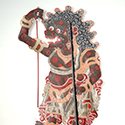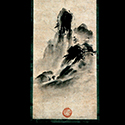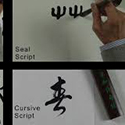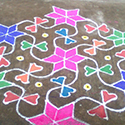|
|
| Show All 73 Results (Text Only) |
|
|
|
| Create Your Own Illustrated Haiku |
|
|
Haiku is a form of Japanese poetry made of three lines (5 syllables, 7 syllables, 5 syllables) that is commonly a meditation on nature. Make an image using colorful paper and ink, and then write a haiku inspired by your creation. Downloads include visual instructions and an activity.
Go to Museum Resource: https://education.asianart.org/resources/create-your-own-illustrated-haiku/ | |
|
|
| Create Your Own Mandala |
|
|
The act of creating the mandala can be a quiet, meditative act, as well; drawing repeating patterns, especially of meaningful images or symbols, can be a calming experience that helps keep the artist centered and focused.
Go to Museum Resource: https://education.asianart.org/resources/create-your-own-mandala/ | |
|
|
|
| The Development of Landscape Painting in China: The Song through the Ming Dynasties |
|
|
Invasions in the north by the Jin Tartars in the 12th century forced the Song dynasty to retreat to the south where a new court was established at Hangzhou in 1127. Under the Emperor Hui Zong the Imperial Painting Academy already was moving in the direction of closer views of nature, both in landscapes and in images of birds, flowers, and insects. The intent was to capture the vital life spirit of these subjects as well as an understanding of their true form, texture, and movement in space. See also Ming Dynasty (1368–1644) Education and Tradition.
Go to Museum Resource: https://education.asianart.org/resources/the-development-of-landscape-painting-... | |
|
|
|
| Epic Literature – The Ramayana (Story of Rama) |
|
|
Students are introduced to the Ramayana (Story of Rama) and recall events by sequencing related art objects on a Story Hill. Then students make connections between artistic and literary depictions of character by comparing Vishnu and Ravana. Downloads include a lesson plan, multiple handouts, guides, and appendices, and a slideshow.
Go to Museum Resource: https://education.asianart.org/resources/epic-literature-the-ramayana-story-of-... | |
|
|
|
| Show All 73 Results (Text Only) |








